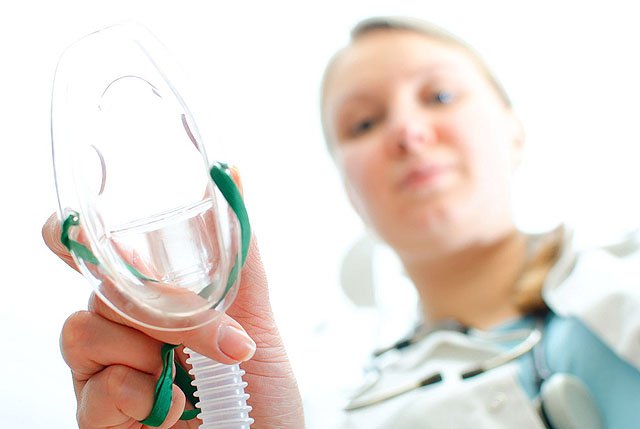Surgical plastics: indications and contraindications, surgery
Plastic surgery is a specific field of surgery that specializes in the restoration of deformities, the correction of anomalies, or any other defects of a part of the body, organ, tissue, or surface of the human body.
In most cases, it is used to reconstruct damaged parts of the body or congenital anomalies.
Such operations make up more than 2/3 of the entire surgical plastics.
Significantly fewer operations are performed with an aesthetic purpose, for example, surgical plastic surgery of the lips (cheiloplasty) is performed only for cosmetic cosmetic correction in only 20% of cases.
There are two main types of indications for plastic surgery:
- Medical.
- Aesthetic.
Medical indications. Surgical plastics for medical reasons is a necessity, since only with its help it is possible to cope with such defects as:
- Deformations of body parts and organs after injuries.
- Congenital anomalies of the body.
- Burns, frostbite and other serious damage to the skin.
This can include both serious injuries leading to deformities (gross damage to the facial skull) and minor defects (for example, curvature of the nasal septum), the elimination of which improves the patient’s quality of life (restore nasal breathing).
Aesthetic indications. Plastic surgery in such cases is the personal desire of the patient to improve their appearance, while not having gross defects or medical indications. Such operations are most often directed to one particular organ or part of the body, for example, surgical plastic surgery of the lips or nose.
Both with medical and aesthetic indications for treatment, the main goal of surgical plastics is to improve the patient’s appearance, regardless of the initial state - whether it is congenital deformity, trauma, or simply the client’s dissatisfaction with his appearance.
As well as any other surgical intervention, surgical plasty has a number of contraindications:
- Endocrinological pathologies, first of all - diabetes.
- Benign and malignant neoplasms.
- Violation of the rheological properties of blood, including reduced clotting.
- Congenital and acquired heart defects.
- In most cases - age up to 18 years, sometimes - up to
40-50. - Skin disease
- Chronic pathology of internal organs.
- Violation of systemic blood pressure - hypertension or hypotension.
- Violation of the rhythm, the frequency of contractions of the myocardium.
- Mental diseases that can distort the perception, including himself.
All plastic surgery requires anesthesia (anesthesia).
Depending on the volume of the operation and the complexity of its implementation, the following types of operation can be used:
- Local
- Conductor.
- Regional.
- General or anesthesia.
Local anesthesia . It is carried out by application or injection method. In both cases, it provides superficial and short-term anesthesia, which is usually sufficient for small interventions: limited liposuction, surgical plastic of the lips, minimal breast correction, etc.
 Conductive anesthesia. Because requires precise identification with a needle, which is accompanied by painful sensations in the patient, it is used extremely rarely. The essence of this anesthesia is the introduction of an anesthetic into the fiber around a branch of a nerve, several nerves or its trunk. It can be used in operations on the lower (below the knee) and upper (below the elbow) limbs, surgical repair of the external genital organs and some operations on the face (eyelid correction - blepharoplasty).
Conductive anesthesia. Because requires precise identification with a needle, which is accompanied by painful sensations in the patient, it is used extremely rarely. The essence of this anesthesia is the introduction of an anesthetic into the fiber around a branch of a nerve, several nerves or its trunk. It can be used in operations on the lower (below the knee) and upper (below the elbow) limbs, surgical repair of the external genital organs and some operations on the face (eyelid correction - blepharoplasty).
Regional anesthesia. Used for long, voluminous and rather painful surgical procedures. Depending on the method of administration of the drug, such anesthesia may be epidural (injection of anesthetic into the space above the dura mater) or spinal (administration of anesthetic into the spinal canal - subarachnoid space).
Spinal anesthesia is used for volume liposuction of the abdomen and thighs, buttocks, lower legs plastics, and gross defects of the external genital organs.
Epidural anesthesia is carried out with serious operations on the middle areas of the chest, abdomen, pelvis and lower limbs, as well as massive breast corrections.
Anesthesia During general anesthesia, the body plunges into a deep medication sleep, during which the patient completely stops feeling something. Anesthetics can be administered intravenously or by inhalation (through a mask or intubation tube). It is mainly used for complex operations, however, in some cases, anesthesia can also be used during more simple interventions, such as surgical plastic of the lips, etc.
Rehabilitation program after any surgical intervention, incl. and surgical plastics, compiled individually for each patient, as this takes into account age, condition, comorbidities, lifestyle and other features.
It is worth noting
In general, rehabilitation after plastic surgery is aimed at removing tissue swelling, hematomas, small hemorrhages, muscle stimulation, improving local blood supply and general detoxification of the body.
Depending on the plastic surgery performed, the rehabilitation course ranges from
Surgical plastics, regardless of the volume of the operation or other factors, always have the risk of complications.
The most frequent adverse events after plastic surgery include:
- Subcutaneous accumulation of blood - hematoma. Occurs in violation of the integrity of large vessels in the surgical field and massive hemorrhages.
- Pigmentation of the skin. Developed in violation of the integrity of the capillaries of the microvasculature.
- Rough connective tissue scars. Occur with non-compliance by the surgeon of the technique of imposing cosmetic seams.
- Pain at the site of the operation and along the nerve. Develops with damage to the nerve fibers of a certain nerve.
- Disorders of motor activity - paresis, paralysis. Occur when a gross violation of the integrity of the nerve trunk of a large nerve.
- Ischemia and necrosis of the skin. It occurs due to insufficient blood supply to a certain area of the skin at the site of the operation.
Surgical plastic of the lips or cheiloplasty.
Cheiloplasty is a surgical plastic of the shape, size, appearance of the lips.
Indications for cheiloplasty:
- Congenital anomalies.
- Deformities after injuries.
- "Rabbit lip".
- Excessively plump or threadlike lips.
- Benign neoplasms, papillomas, fibromas, cysts.
- Pronounced lip asymmetry.
- Sagging of the lower or upper lip.
 Surgical plastic surgery of the lips is performed under local anesthesia.
Surgical plastic surgery of the lips is performed under local anesthesia.
However, if the patient wishes, it is possible to use general anesthesia - anesthesia, which is a less favorable method.
The essence of such a plastic surgery is to perform small sections above the contours of the upper and lower lips and correct the excess or deficiency of the skin.
The operation itself takes from 1 to 2 hours depending on the clinical situation, followed by a short rehabilitation period, lasting
Surgical face surgery
Plastic surgery on the face consists in the correction of age-related changes or defects (congenital or acquired). The most popular operation on the face is considered a skin tightening - rhytidectomy .
Indications for rhytidectomy:
- Age-related skin changes - flabbiness, folding, deep wrinkles.
- Deformation of the oval face.
- Related factors affecting the skin of the face:
- Changes in hormonal levels.
- Metabolic disorders.
- Heredity.
- Exposure to ultraviolet rays.
It is worth noting
Surgical plastics of the skin of the face is resorted to only in the case when other methods of correction are ineffective, and these operations try not to be carried out by people under 40 years of age.
In most cases, rhytidectomy is performed under general anesthesia, however, as an exception, it is possible to use local anesthesia.
The operation itself consists in making cuts in the least visible places - behind the auricles or in front of them. Next, surgeons with the help of separation of fascias and muscles perform the necessary amount of work, after which the wounds are sutured and a sterile dressing is applied.
On average, rhytidectomy lasts from 1 to 2.5 hours, and the rehabilitation program takes about
Surgical abdominal surgery
 Surgical abdominal plastic surgery or abdominoplasty is a complex of surgical procedures aimed at removing excess skin and adipose tissue needed to restore the normal shape and proportions of the anterior abdominal wall.
Surgical abdominal plastic surgery or abdominoplasty is a complex of surgical procedures aimed at removing excess skin and adipose tissue needed to restore the normal shape and proportions of the anterior abdominal wall.
Indications for abdominoplasty:
- The presence of "stretch marks" in combination with flabbiness of the skin.
- The development of skin and fat "apron" in the lower part of the anterior abdominal wall.
- Umbilical hernia.
- Excessive divergence of the direct and oblique abdominal muscles.
- Massive postoperative scars.
In such surgical interventions, as a rule, general anesthesia is used - anesthesia.
The technique of the operation depends on the clinical situation and the specific method chosen by the surgeon.
On average, abdominoplasty lasts
Surgical nose surgery
Surgical nose surgery or rhinoplasty is an operation whose purpose is to change or restore the shape and size of the nose and / or the resumption of normal nasal breathing.
Indications for rhinoplasty:
- Deforming injuries of the nose.
- Congenital abnormalities of the structure.
- The curvature of the nasal septum.
Depending on the method of rhinoplasty is open and closed. With open surgery, skin incisions are made on the nose column; when closed, skin incisions are not made.
The choice of anesthesia method depends on the clinical situation and the individual characteristics of the patient; therefore, both general anesthesia and local anesthesia can be used.
The duration of rhinoplasty is on average from 1 to 2 hours, and the course of recovery is
